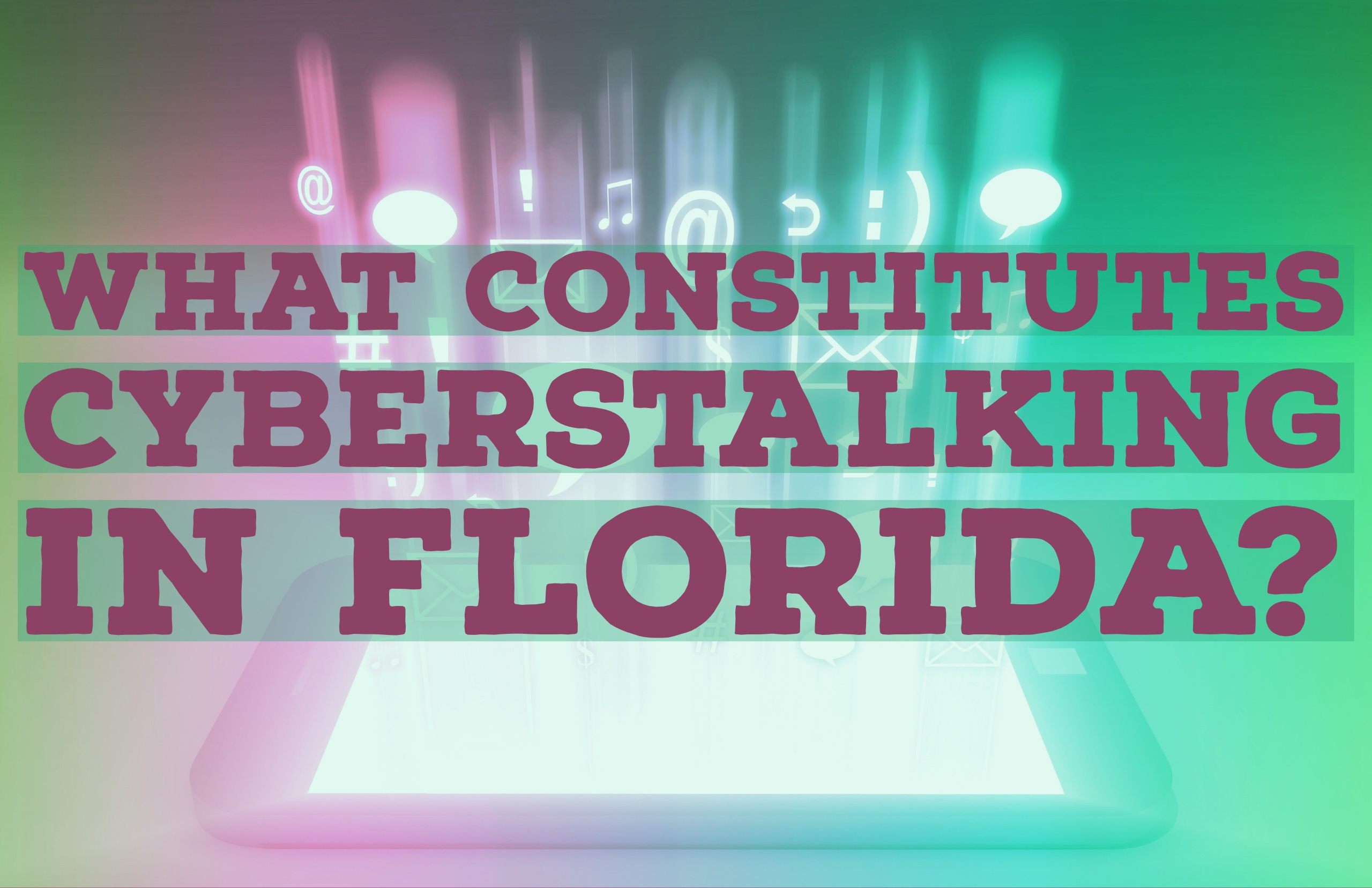
A 20 year old student at the University of North Florida was recently the victim of a man who created fake social media accounts using her name and likeness. Her Facebook photos were used to create fake social media accounts on Instagram and Tinder. The fake accounts requested money be sent and stated that the victim was “sexually ready.” So, was this a crime? And if so, what crime was it?
The young man that created these fake social media accounts was arrested and charged with Cyberstalking. Cyberstalking is defined in Florida Statute Section 784.048(1)(d) and requires:
- engaging in a course of conduct to communicate, or to cause to be communicated, words, images, or language,
- by and through electronic mail or electronic communication,
- directed at a specific person,
- causing substantial emotional distress to that person, and
- serving no legitimate purpose.
In order to prove that a person cyberstalked a victim, the State must prove that he or she did so willfully, maliciously, and repeatedly.
Cyberstalking, by the way, is subsumed in the general stalking statute, which includes repeatedly following and harassing a person. Cyberstalking is harassment (or general stalking) through electronic communication.
The first part of the cyberstalking statute, “engaging in a course of conduct to communicate, or cause to be communicated, words, images, or languages,” seems to be satisfied if it is established that the defendant created a social media account, viewable by the general public, which exhibited the victim’s photo and a purported message from the listed victim requesting money and suggesting she was ready sexually. Creating a social media account and making it active is a communication of words and images to other people.
The third portion of the cyberstalking definition is a little more difficult. The statute requires that the electronic communication be directed at a specific person. This is typically easy to prove in a general cyberstalking case. A defendant emails a listed victim on several occasions with threats or derogatory statements. The mere fact that the email was sent to the listed victim would establish that the communication was directed at a specific person. However, in this case, where a fake social media account was created, it can be argued that the communication was directed at the general public and not to the victim specifically. The prosecution will, no doubt, argue that the communication was directed specifically at the listed victim to cause her substantial emotional distress. A somewhat veiled, implicit communication directed at the victim, but a communication nonetheless. So what do the courts say? Well, there is a Florida 2nd District Court case where the defendant sent derogatory emails about the victim to professional colleagues of the victim, but not directly to the victim. Scott v. Blum, 191 So.3dd 502 (Fla. 2nd. DCA 2016). The Court said that because the emails were not directed at the listed victim, it was not cyberstalking as defined under Florida law.

Even if law enforcement declines to prosecute a cyberstalking case, a person can seek an injunction from the Court restraining the accused from communicating with or contacting them.
But that’s not what really happened here, is it? This defendant didn’t simply send emails to third parties making derogatory statements about the listed victim. He is alleged to have created fake social media accounts purported to have been created and publicized by the victim. So, was this not a direct communication to her (albeit, implicit and veiled)? A direct communication implicitly telling the victim, “I can make your life miserable.” Or was it a communication to the general public? A social media account (albeit fake) communicating information to the general public (albeit false information)?
The fourth portion of the definition, which is that the communication caused substantial emotional distress to that person would typically be decided by the jury. There is a legal threshold that the prosecution would have to get over, but as long as they put on substantial, competent evidence of emotional distress, the jury would decide. For example, testimony from the victim that she could not eat or sleep, or had to be prescribed medications to cope with depression or anxiety, or other testimony that she was negatively affected by the communications will usually be enough to get that issue before the jury.
Finally, the prosecution must prove that the communications served no legitimate purpose. For example, if a person is exercising their first amendment rights to free speech or contacting an ex repeatedly to retrieve some of their property, this would not be stalking because there is a legitimate purpose to the communication.
Cyberstalking is a relatively new area of law, due to the advancements in electronic communication, including social media sites. It will take time for laws to catch up to the technology, and for courts to interpret laws that are already on the books. In this particular case, there will probably be a motion to dismiss filed by the defense arguing that the communications were not directed at a specific person. The trial court would have little precedent to rely on in making a decision. It should be interesting to see how elastic the cyberstalking statute becomes as the case law evolves.
Any person convicted of cyberstalking is facing up to one (1) year in jail. If the person makes a credible threat to the person, it is considered aggravated stalking, and they are facing up to five (5) years in prison and a felony conviction. If the cyberstalking involves a victim under 16 years old, it is also aggravated cyberstalking and the person is facing up to five (5) years in prison and felony conviction. A person who is convicted of cyberstalking after an injunction for protection was in place for that victim also is facing up to five (5) years in prison and a felony conviction under the aggravated stalking laws.
 Jacksonville Criminal Lawyer Blog
Jacksonville Criminal Lawyer Blog

